There are not many countries in the world that have such striking differences between life in a major city and in a quaint small town as Scotland!
If you ask a Scotsman about his opinion on life in a city like Edinburgh or Glasgow versus life in a small town like Dunblane or Stromness probably you will hear some extreme opinions
And that is remarkable, since Scottish people tend to be moderate – unless we talk about a certain football derby…
Because yes, depending on where you live in Scotland, For 230,000 pounds you can buy an elegant 5-bedroom stone manor like this one.
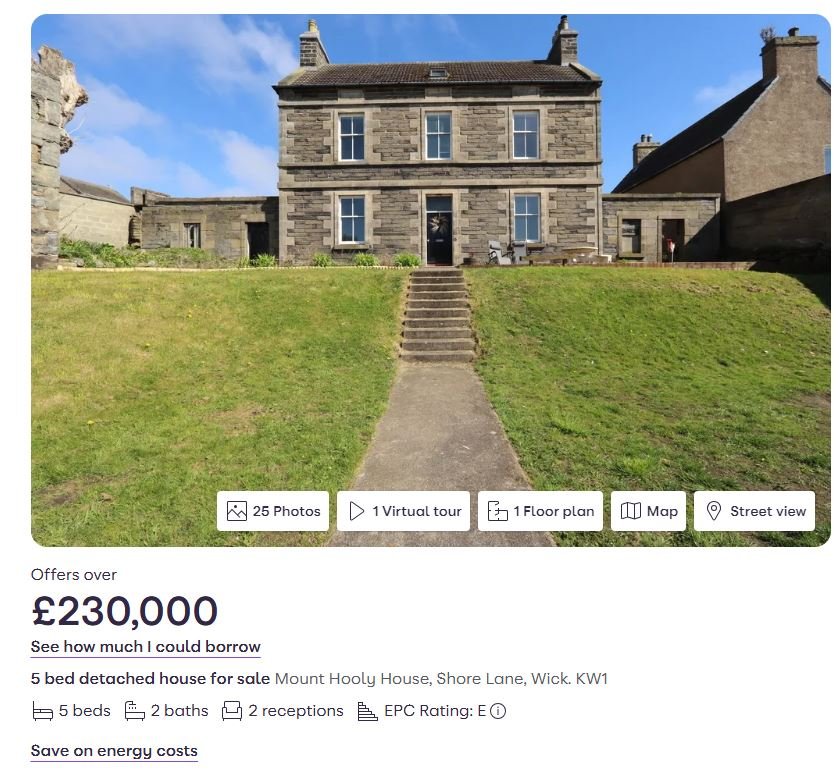
Or a tiny 1-bedroom flat like this here.
If you ever thought about living in Scotland, choosing between cities and towns could be the most important decision you’ll make.
Today you will discover the pros and cons of each lifestyle choice, and by the end of this article, I will tell you 2 places that have the unique and remarkable quality of putting together the best things from both large cities and small towns.
So let’s start with the pros and cons of living in Scotland’s largest cities
Namely, Glasgow and Edinburgh – because those are the only ones with more than half a million people.
The first pro of these two major cities is the access to advanced healthcare.
Those two cities offer state-of-the-art healthcare facilities. Edinburgh is home to the Royal Infirmary of Edinburgh and the Western General Hospital, two of the top hospitals in Scotland, while Glasgow has the Queen Elizabeth University Hospital.
These cities also have a higher concentration of GPs (General Practitioners), pharmacies, and private healthcare options
Another very impressive feature of both Glasgow and Edinburgh – especially for Americans – is the quality of the public transport
Glasgow offers the most extensive public transport network in Scotland, making it highly convenient for retirees.
The city features the Glasgow Subway, a circular underground system often called the “Clockwork Orange,” which connects 15 stations across key areas like the City Centre and West End.
Edinburgh, on the other hand, has a tram system that runs from Edinburgh Airport to the city center and passes through major areas such as Haymarket and Murrayfield. Lothian Buses operates extensive bus services, with over 50 routes across neighborhoods and nearby towns.
Will you need a car in those cities? Well, this is what a local told us:
“In Glasgow is generally OK to not have a car. Some places are terrible for parking so you might be even better off without a car.”
The next pro of those two big cities in Scotland is something that people often neglect, but if you are a foreigner, this thing is actually important,
And I am talking about the social and cultural events that give you opportunities to socialize.
Edinburgh is in fact known as “The Festival City”, while Glasgow is known as the UK’s music capital.
These cities also offer community groups, hobby clubs, and recreational centers where you can build connections and engage in activities suited to your interests.
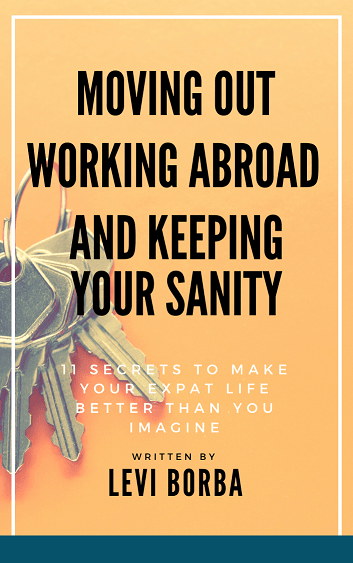
Libraries, cinemas, theaters, and sports facilities are easily accessible, so living in a Scottish metropolis like Glasgow or Edinburgh offers vibrancy and convenience…
…but at what cost?
And that is when we started with the cons of living in a large city
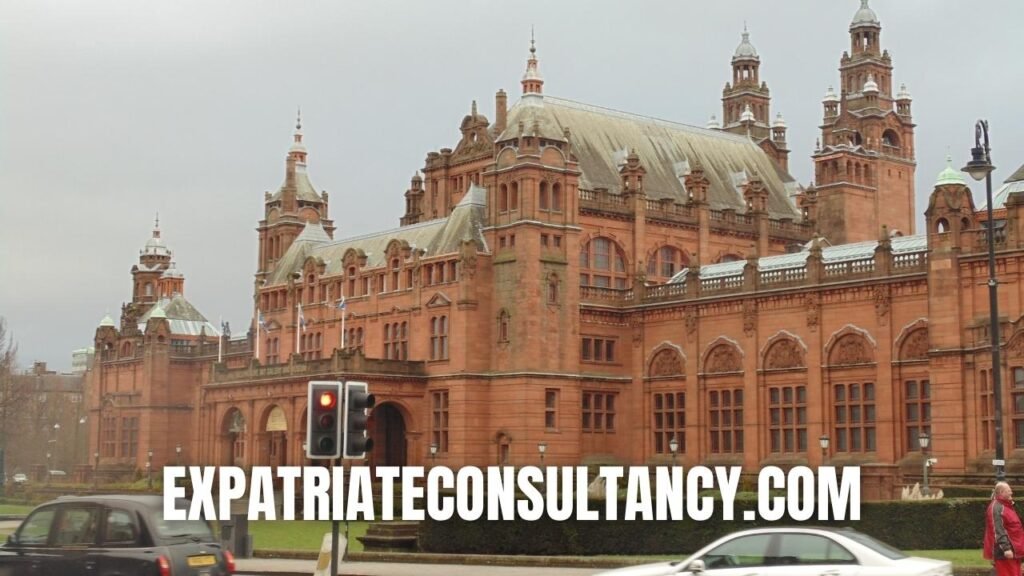
Edinburgh and Glasgow are significantly more expensive than the rest of the country.
The average monthly rent for a one-bedroom flat in Edinburgh is £850, compared to £450–£600 in smaller cities like Perth or Inverness. Property prices are also much higher; for example, in Edinburgh, a modest two-bedroom apartment in areas like New Town or Bruntsfield can go over £350,000
This is more than twice the price in the towns I will show you in a few paragraphs.
A former resident from Glasgow told us that:
“Lived in Glasgow for about 10 years on and off, my rent has doubled in that time and despite my salary increasing significantly, I have less disposable income. I manage to save and do okay, but I made the decision to move to Kilmarnock recently to boost help to buy savings.”
Then there are also the higher crime rates.
Glasgow was once known as the murder capital of Europe
Things are much better now. I even made an entire video about the improvements in safety Glasgow experienced, but still, when we check the map of the places with the most crime in Scotland, the three largest cities in Scotland stand out.
In 2023, Edinburgh had 51 crimes per 1,000 people, and Glasgow had 59 crimes per 1,000, compared to 35 in Perth and 37 in Inverness, two smaller cities. In city centers like Glasgow’s Merchant City or Edinburgh’s Old Town, theft and pickpocketing are common.
The third problem of moving to Scotland to live in a large city might be counterintuitive:
The limited housing availability
And this is counterintuitive because technically, a large city should have a larger range of housing options, but the problem is that Edinburgh and Glasgow also have a huge demand for roofs.
In Edinburgh, the surge in demand for short-term rentals (like Airbnb) has reduced the availability of long-term housing. Glasgow faces similar rental issues, particularly in sought-after neighborhoods like West End (Hillhead and Finnieston).
As of 2023, the monthly rent for a one-bedroom apartment in central Edinburgh is easily over £1,000, and the same is valid for the West End of Glasgow.
For those who want to buy a property, a townhouse in Glasgow might cost half a million pounds.
In Edinburgh, in districts like Edinburgh, two-bedroom flats typically cost between £350,000 and £450,000.
Short-term rentals are not the only reason there is a shortage of properties in these cities. Limited housing availability is also driven by high demand from younger demographics who move out from smaller cities to study or to work in the metropolis.
But wait!
Why are young people moving out from smaller cities? Are smaller towns and villages in Scotland that bad?
Not really, and for some people, they can actually be a great place!

Let’s understand that by exploring…
The pros of living in smaller cities or towns instead of Edinburgh or Glasgow
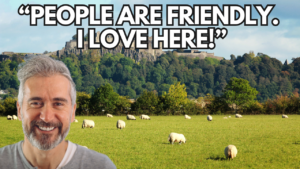
The first one is the most obvious one:
Lower Housing Costs and Larger Homes
And to enjoy these lower costs you don’t even need to look for villages in the middle of nowhere – in mid-sized cities like Dundee, Perth, and Inverness, housing prices are much lower.
For example, as of 2023, the average cost of a two-bedroom house in Perth is £170,000, compared to over £300,000 in Edinburgh’s suburbs
Dundee has even more affordable options, with average property prices around £140,000 for similar homes.
Homes in smaller towns often come with larger living spaces and outdoor areas. In Perth, many properties include gardens or even larger plots of land, a feature rarely found in city flats.
Not only the housing costs are lower, but in these smaller cities, there is a reduced overall cost of living, and that includes things like leisure or basic services, like a haircut. They have more cinemas, community theaters, and public leisure centers.
Want to drink a beer at the nearby pub? In Edinburgh, you will need to pay more than 5 pounds!
Meanwhile, in Dundee, the average price for a pint of beer is just £3.84, and in Perth is even less: £3.65, So almost 30% cheaper!
But cheaper housing, cheaper beer, and a cheaper haircut are not the only advantages of living in a smaller city
They also provide you with a slower pace of living, which for some is really attractive
Daily errands are less stressful, with shorter queues in shops and quieter public spaces.
Even if sometimes the distances are bigger in these smaller cities due to the houses being more sparsely distributed, the fact that there is no traffic makes commuting much faster.
For example, Stirling, a city with almost 38,000 residents, has an average commute time below 15 minutes, significantly less than the 30+ minutes common in Edinburgh or Glasgow.
This time that you save you can spend on things that really matter, like watching a game of the local team in the nearby pub.
And lastly, these smaller cities are safer.
Cities like Inverness, Perth, and Stirling report crime rates of 35 to 40 incidents per 1,000 residents annually. This is much lower than Glasgow, with 59 incidents per 1,000 residents, or Edinburgh, with 51 incidents per 1,000.
Violent crimes are also much less common in these smaller urban areas – in Stirling, violent crime incidents were recorded at 3.4 per 1,000 people in 2023, compared to 11.2 per 1,000 in Glasgow.
But be aware that the lower costs, the bigger gardens, the cheaper beer, and the safer neighborhoods also come with a cost.
Not really financial in this case, but in terms of infrastructure.
The Cons of Living in Smaller Scottish Cities and Towns
See, there are things that we take for granted in bigger cities that are not always present in villages
High-speed internet, for example.
While mid-sized cities like Dundee have reliable internet, more rural locations such as Forres or Aberfeldy may not offer consistent high-speed broadband.
According to a 2023 report on UK broadband, only 82% of households in rural Scotland have access to speeds above 30 Mbps.
Another issue is the lack of public transportation.
You have sparse bus routes, services are infrequent, and may not operate late into the evening. For instance, local routes operated by Stagecoach often run only a few times per day.
Many countryside towns also lack direct train services. For example, Aberfeldy requires a 30-minute drive to the nearest station in Pitlochry. This adds a layer of inconvenience for retirees who enjoy day trips or need to travel to larger cities for medical appointments or shopping.
But of all these negative sides of living in a small town or village, the most surprising is the…
Heating issues.
Yes, you heard it right.
The first issue is the higher costs of heating due to an older infrastructure – many places do not have a supply of heating gas.
So these homes in smaller towns, particularly older ones, rely on oil-fired heating systems instead of natural gas. As of 2023, the cost of heating oil is approximately £100–£120 per month during winter, compared to around £70–£90 for gas – so your heating bills in this case are quite higher.
The next issue is the potential for service disruptions.
Remote towns like Fort Augustus or Kingussie may experience heating or power outages during severe weather. Storms can delay the delivery of heating oil or repairs to power lines, leaving residents without heat for extended periods.
Lastly, there is the issue of energy efficiency
(although this is not exclusive to small towns, it might also happen in older buildings located in big cities.)
Older homes may not be well-insulated, leading to higher energy bills. Residents might need to invest in home upgrades, such as double glazing, to reduce heating expenses.
But don’t let these negative aspects scare you, because remember at the beginning of this article, when I told you that I would show you two places in Scotland that have a remarkable characteristic of putting together the best aspects from both large cities and small towns.
Best Places to Move to and Retire in Scotland
So the first city I want to tell you about is…
Stirling
Located in central Scotland, Stirling serves as a bridge between the Lowlands and the Highlands.
It is around 58 kilometers northwest of Edinburgh and 42 kilometers northeast of Glasgow, making it well-connected to Scotland’s major cities. Stirling has a population of approximately 37,000, so it is a small city, but still big enough to find many of the conveniences you need.
Very close is the Forth Valley Royal Hospital in Larbert, providing comprehensive services. There are also plenty of local doctors and pharmacies easily accessible.
Another good point is the city’s central location making it a transport hub. The Stirling Railway Station has frequent connections to Glasgow (45 minutes) and Edinburgh (50 minutes), while local buses connect Stirling to nearby villages.

Outdoor enthusiasts can enjoy King’s Park and the walking trails of The Back Walk – which is regarded as one of Europe’s finest urban walkways.
This is what a local told us about the city:
“I live in Stirling and what is great about this city is that it is the gateway to the highlands, and in a matter of minutes, you can be out on a country walk. The train and bus services are very good and regular and you can be in Glasgow, Edinburgh, or Dundee in under an hour. What I also love about Stirling is its historical culture that is so intertwined with its modern aspects. The people are friendly (although it may not appear that way in some cases they generally are). Plenty of nice flats etc around here too.”
Another pro of Sitirling is that it is one of Scotland’s safest cities, and it has a low crime rate of just 35 incidents per 1,000 residents.
If all these advantages are not enough, wait until you discover the price of housing in Stirling and how much cheaper it is if you compare it to Edinburgh.
There you can rent a flat in the city center for just 775 pounds.

In Edinburgh, a similarly centrally located apartment costs 1150 pounds, almost 50% more!
If you prefer to buy a house and have a budget of 200,000 pounds (around 250,000 dollars), in Stirling, you can buy a spacious 3-bedroom house with a terrace.
In Edinburgh, for such a price you buy just a 1-bedroom flat.
Huge difference, right?
But there is another city that might be even better than Stirling!
It is Perth
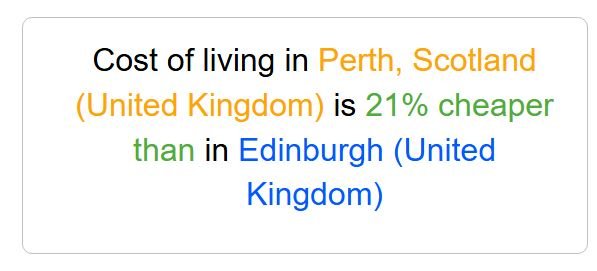
Located in eastern Scotland, Perth lies on the banks of the River Tay, 72 kilometers north of Edinburgh and 96 kilometers northeast of Glasgow. With a population of almost 47,000, it is slightly bigger than Stirling.
Since it is bigger than Stirling, the offer of public services in Perth is more robust. The healthcare infrastructure, for example, is anchored by the Perth Royal Infirmary, which offers a range of medical services, including care for older adults.
The Perth Railway Station offers connections to Edinburgh, Glasgow, and Inverness, and they also have an ample network of buses serving the city and surrounding villages.
If we talk about leisure, well, for a city of its size, Perth really shines.
The Perth Concert Hall hosts live performances, while the Perth Museum and Art Gallery features local history and art. Outdoor activities include walking along the River Tay or relaxing in North Inch Park, both of which offer serene and scenic environments.
This is what a local told us about Perth:
“Perth is a lovely place, large enough to get entertainment, nice restaurants and shopping but close to beautiful countryside.”
The most interesting thing is that, despite being bigger than Stirling, Perth is even cheaper!
There you can rent a 2-bedroom apartment, located a short walk away from the city center, for just 550 pounds per month – half the price of cities like Glasgow or Edinburgh.

If you prefer to buy a place, let’s consider that you have the same housing budget of 200,000 pounds that we used for our example of Stirling
In Perth, you can buy a 3-bedroom terraced villa in a peaceful cul-de-sac in the popular western edge district of the city.
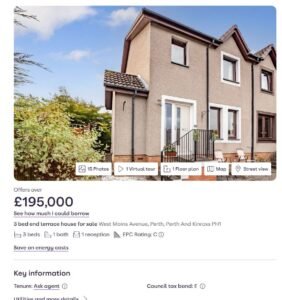
It is a fine price to live in a city that is small enough to avoid the soul-crushing gridlock of bigger cities, but big enough to have everything you need, Perth is the Goldilocks zone of Scotland. It’s not too much, not too little—it’s just right.
But Scotland is not the only place in Europe where an American can retire without the need to learn a new language. Countries like Ireland and Malta, where English is widely spoken, also offer excellent options for English-speaking retirees seeking a peaceful European lifestyle. However, it’s worth exploring less conventional destinations as well, such as Romania. For those considering this option, it’s important to weigh the retire in Romania pros and cons, including the affordable cost of living and picturesque landscapes balanced against potential language barriers and differences in infrastructure.
In this article here, I talked about a certain island that attracts a lot of eyes: Ireland – and they have some peculiar advantages.
Levi Borba is the founder of expatriateconsultancy.com, creator of the channel The Expat, and best-selling author. You can find him on X here. Some of the links above might be affiliated links, meaning the author earns a small commission if you make a purchase.




